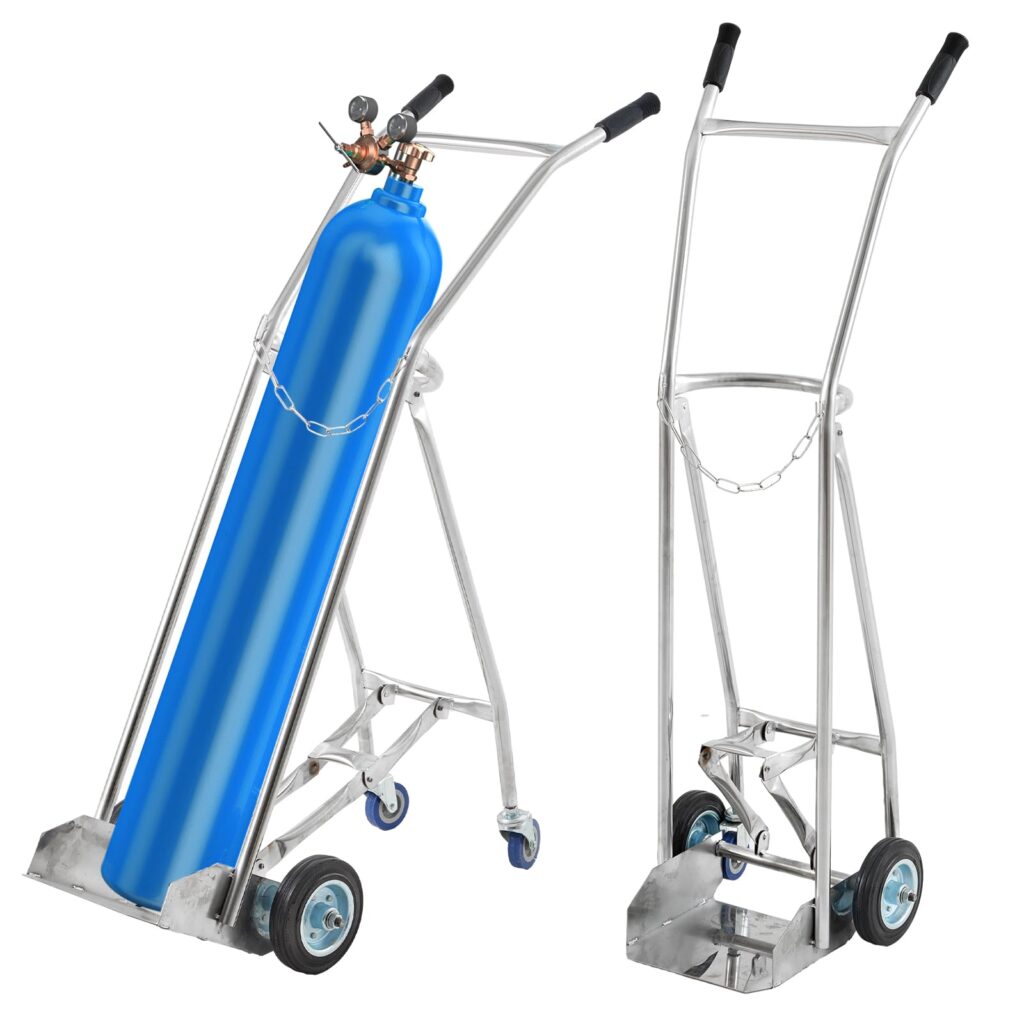Cylinder carts are essential for safely transporting gas cylinders in various industrial and medical settings. However, improper handling can result in serious accidents, so following safety protocols is critical. First and foremost, always inspect the cart and the cylinder before use. Make sure the cart is in good condition, with sturdy wheels and a secure cylinder chain or strap. Avoid using carts with faulty parts, as they could compromise stability. When loading, position the cylinder upright and ensure it is tightly secured to prevent tipping or falling during transportation. Ensure that the cylinder cart is in good condition before use. Inspect the cart regularly for any signs of wear and tear, such as damaged wheels, bent frames, or rust. A well-maintained cart is essential for safe operation. Also, check that the cart is rated for the weight and type of cylinders you plan to transport. Overloading a cart or using one not designed for specific types of cylinders can lead to tipping or collapse.

Another key safety measure understands weight limits and correct handling techniques. Cylinder carts come with specific weight capacities, and overloading them increases the risk of accidents. Always distribute weight evenly and go here to push the cart forward rather than pulling it to maintain control. Using personal protective equipment PPE such as gloves, safety shoes, and goggles is also essential when handling gas cylinders. PPE minimizes exposure to potential hazards like gas leaks or falling objects. When loading a cylinder onto the cart, always secure it properly. Use chains, straps, or other securing devices to prevent the cylinder from rolling or tipping. Cylinders should be positioned upright and should not be loosely placed. Ensuring that the cylinders are stable and well-secured helps in avoiding accidents caused by shifting or falling cylinders during transport.
Always operate cylinder carts on smooth, flat surfaces to reduce the chance of tipping. Avoid rough terrain, slopes, or areas with debris that could destabilize the cart. Be mindful of your surroundings and ensure clear pathways to avoid collisions. If possible, take shorter trips and limit the number of cylinders transported at once. Regular maintenance of the cart is vital for long-term safety. Ensure that wheels, straps, and other components are regularly checked and replaced when necessary to maintain optimal performance. Keep records of maintenance and inspections. Documenting these actions helps in tracking the cart’s condition and ensuring that it is always in safe working order. Regularly reviewing these records can help in identifying patterns of wear or issues that need addressing. By adhering to these guidelines and maintaining a focus on safety, you can effectively reduce the risks associated with using cylinder carts and ensure a safer working environment for everyone involved.
